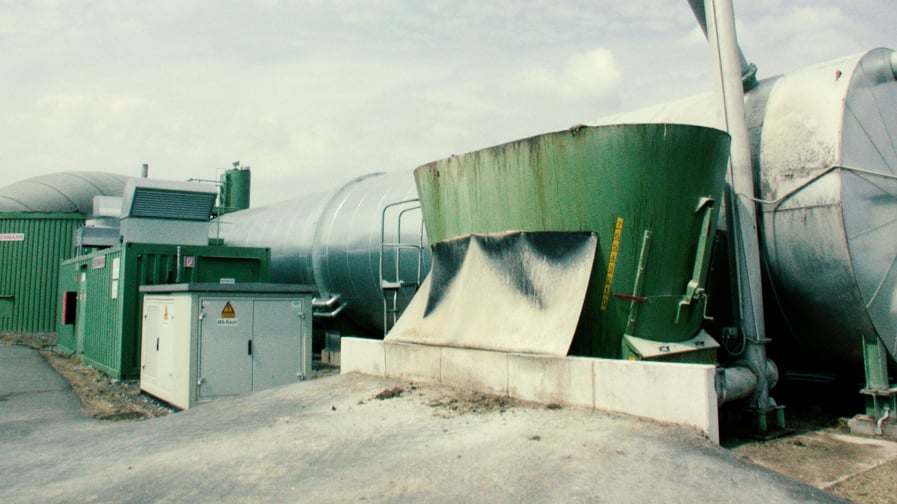What Is ‘Biogas?’
Published Jan 7, 2024

Much of what the agricultural industry calls “renewable natural gas” or RNG is really factory farm biogas. “Biogas” or RNG refers to the mixture of gases that are produced after organic materials are broken down in a process called anaerobic digestion.1Environmental and Energy Study Institute. “Biogas: Converting Waste to Energy.” October 2017 at 1; U.S. Environmental Protection Agency (EPA). “Basic information about anaerobic digestion (AD).” Available at https://www.epa.gov/anaerobic-digestion/basic-information-about-anaerobic-digestion-ad#HowADworks. Updated August 31, 2022. Anaerobic digestion is as simple as it is dirty. Waste goes into an oxygen-free space called a digester, and even more waste and gas (mostly methane and carbon dioxide) come out. The input waste, or feedstock, can be anything from factory farm manure and litter to sewage sludge. The output waste is called digestate.2Ibid. When the feedstock is animal waste, it is often sourced from large factory farms, which produce a tremendous amount of pollution and liquid waste.3Lazenby, Ruthie. “Rethinking Manure Biogas: Policy Considerations to Promote Equity and Protect the Climate and Environment.” Vermont Law & Graduate School. Center for Agriculture and Food Systems. August 2022 at 18. The resulting gas from these operations? Factory farm gas.
This biogas can be used directly to produce electricity or heat,4International Energy Agency. “An introduction to biogas and biomethane.” Available at https://www.iea.org/reports/outlook-for-biogas-and-biomethane-prospects-for-organic-growth/an-introduction-to-biogas-and-biomethane. Accessed April 2023. or the biogas can be upgraded through the removal of hydrogen sulfide, carbon dioxide, and moisture.5California Environmental Protection Agency (CalEPA). “Central Valley Dairy and Co-digester PEIR — Notice of Preparation/Initial Study.” ESA/209481. March 2010 at 6. At this stage, this upgraded gas is called RNG or “biomethane.” Upgraded RNG is often interchangeable with fossil or fracked natural gas, used primarily for vehicle fuel. This end product has a higher methane content than raw biogas.6U.S. Department of Energy. Alternative Fuels Data Center. “Renewable Natural Gas Production.” Available at https://afdc.energy.gov/fuels/natural_gas_renewable.html. Accessed February 2023.
These agreeable names obscure the realities of this gas, furthering the industries’ goals. Calling what is filthy factory farm gas “biogas” or “RNG” is itself part of their greenwashing, as calling an energy “renewable” means nothing tangible. Renewable does not actually indicate that the energy has low emissions or beneficial impacts on air quality. Similarly, marketing the gas as “clean” is just another way to greenwash the fuel, as it is nothing of the sort. These industries are intentionally manipulating public perception and understanding of ideas like “organic materials” and “renewable gas” for their own profit and public image.7Vermont Department of Environmental Conservation (DEC). Agency of Natural Resources. “Anaerobic Digesters.” Available at https://dec.vermont.gov/air-quality/permits/source-categories/anaerobic-digesters. Accessed January 2023 and on file with Food & Water Watch (FWW); Gittelson, Phoebe et al. “The false promise of biogas: Why biogas is an environmental justice issue.” Environmental Justice. Vol. 15, No. 6. 2022 at 355.
Endnotes


